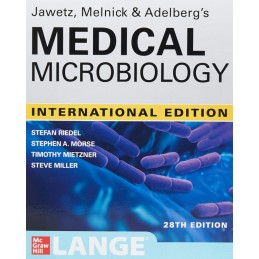Understand the clinically relevant aspects of microbiology with this student-acclaimed, full-color review --- bolstered by case studies and hundreds of USMLE®-style review questions
Since 1954, Jawetz, Melnick & Adelbergs Medical Microbiology has been hailed by students, instructors, and clinicians as the single-best resource for understanding the roles microorganisms play in human health and illness.
Concise and fully up to date, this trusted classic links fundamental principles with the diagnosis and treatment of microbial infections. Along with brief descriptions of each organism, you will find vital perspectives on pathogenesis, diagnostic laboratory tests, clinical findings, treatment, and epidemiology. The book also includes an entire chapter of case studies that focuses on differential diagnosis and management of microbial infections.
Heres why Jawetz, Melnick & Adelbergs Medical Microbiology is essential for USMLE® review::
•640+ USMLE-style review questions
•350+ illustrations
•140+ tables
•22 case studies to sharpen your differential diagnosis and management skills
•An easy-to-access list of medically important microorganisms
•Coverage that reflects the latest techniques in laboratory and diagnostic technologies
•Full-color images and micrographs
•Chapter-ending summaries
•Chapter concept checks
Jawetz, Melnick & Adelbergs Medical Microbiology, Twenty-Eighth Edition effectively introduces you to basic clinical microbiology through the fields of bacteriology, mycology, and parasitology, giving you a thorough yet understandable review of the discipline. Begin your review with it and see why there is nothing as time tested or effective.


 Dostawa
Dostawa
 Płatność
Płatność
 Zwroty
Zwroty
